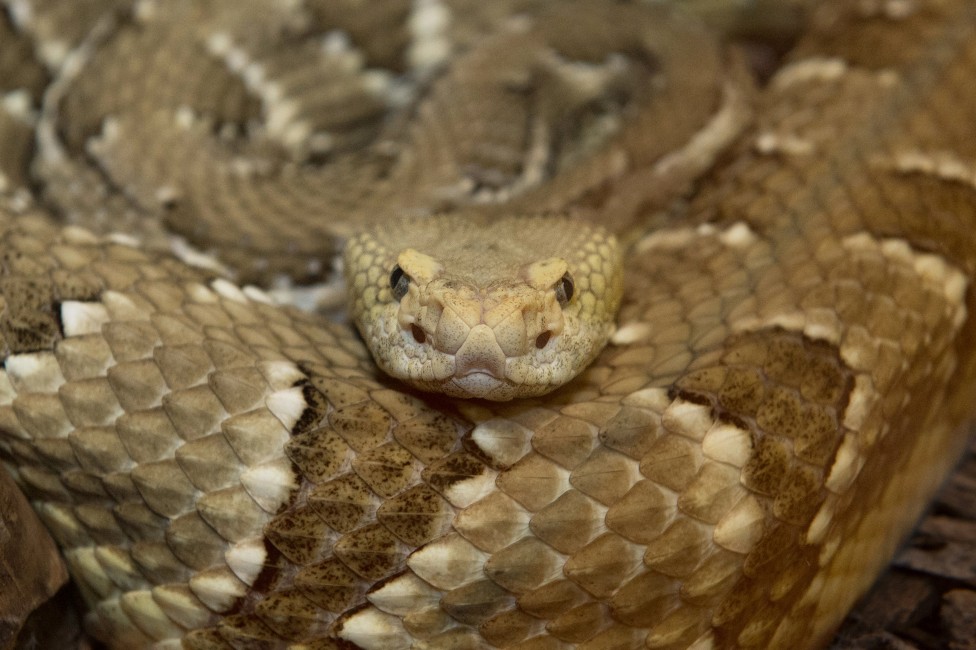
July 24, 2015
In the Pits
- as seen by -
 Avishai Shuter
Avishai Shuter
The venomous snake family Viperidae is comprised of two subfamilies, the “true vipers” and the “pit vipers”. Currently, there are about 151 species of pit viper, which includes rattlesnakes and eyelash vipers.
Pit vipers get their name from the two pits they have near their nostrils, one on each side. These pits are thermal receptors and allow the snakes to see the heat signatures of objects around them. The timber rattlesnake, Crotalus horridus, pictured above, clearly shows the thermal receptors or “pits”. This amazing adaptation is helpful when the snakes are hunting for food or looking for comfortable temperatures to relax in.
Despite the fact that the nerves involved with this heat-sensing ability are intertwined with the nerves that allow the snake to see, research has shown that the two systems can work separately. This means that even blind pit vipers can strike prey with the same accuracy as their sighted counterparts.
For more on pit vipers, read wild animal keeper Andrew Kathriner’s post, After Dark with a Pit Viper.
Editor’s Note: Salute zoo keepers and the wildlife they protect. Stop by one of our keeper chats throughout the week of July 19-25 at the Bronx Zoo.
Nikon D4
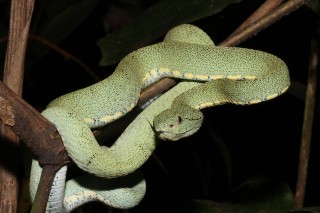
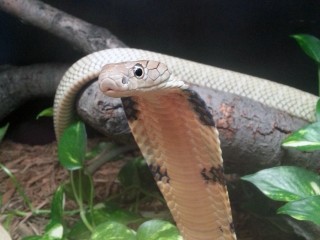
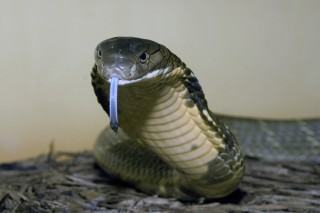
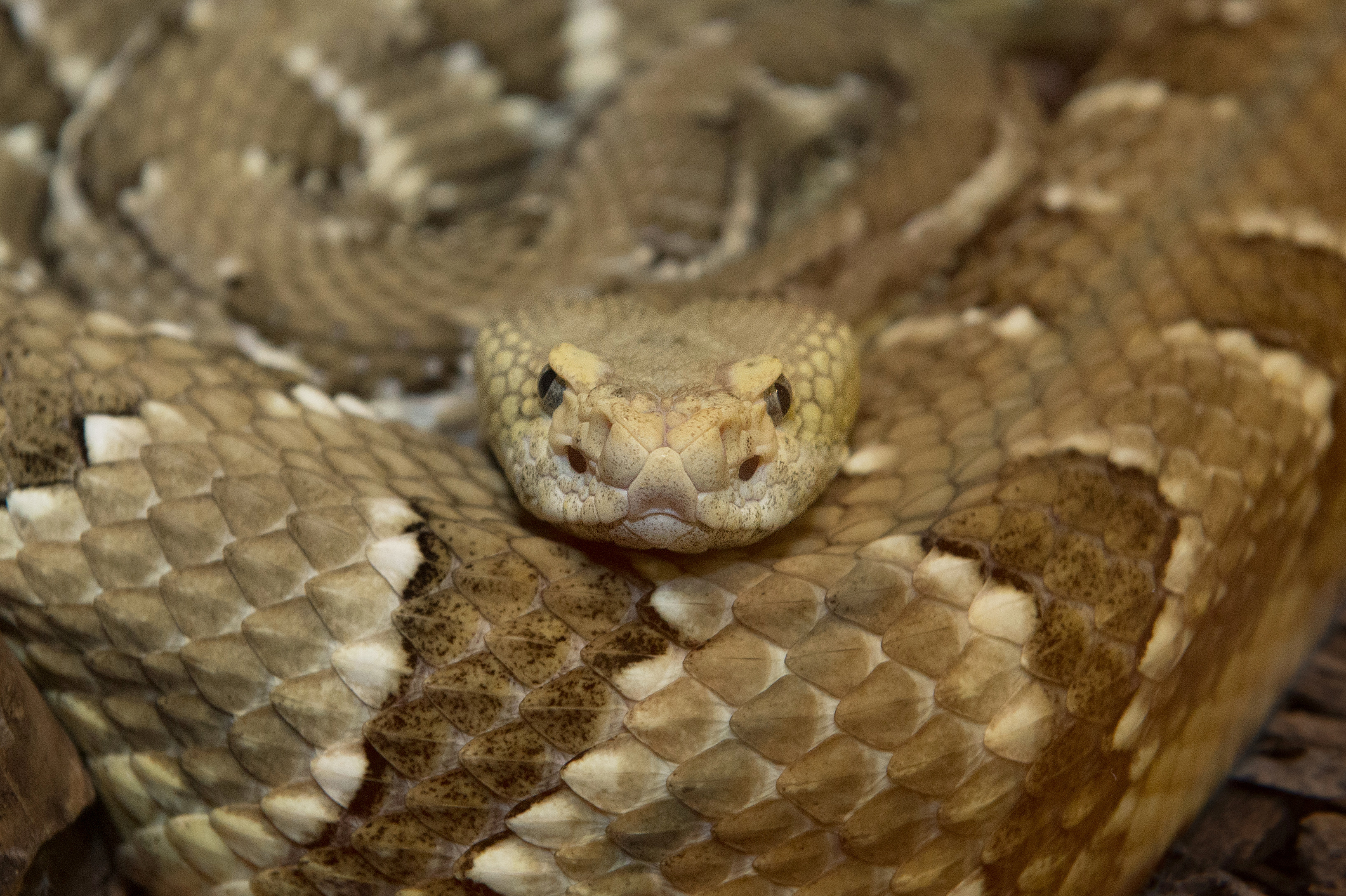
Leave a Comment